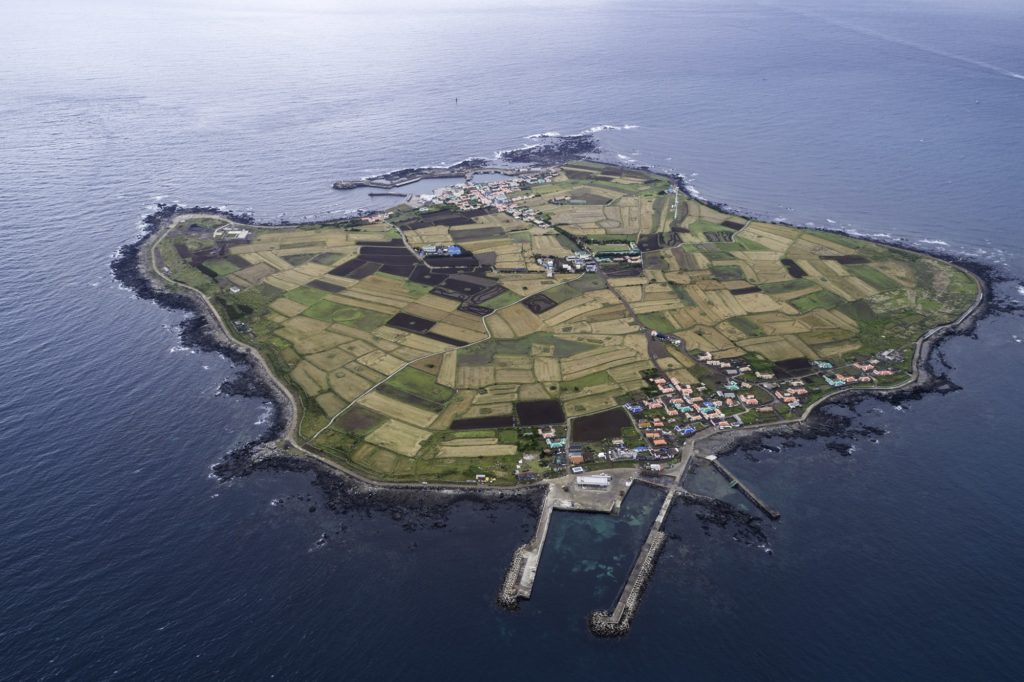
Within South Korea, you can hardly get further from the capital Seoul than the island of Gapado. The journey requires a 70-minute flight to Jejudo, the country’s largest island, then a trip across it by car or bus to a port on its south coast, and from there a 15-minute ferry ride. The first impression is that it is unprepossessing: amounting to less than a third of a square mile of land rising just 67 feet above sea level, Gapado remains barely distinguishable from the horizon until the boat reaches the shore. On arrival, the boat docks at a ferry terminal, its original two storeys reduced to just one and its concrete face adorned with new metal lettering in a distinctive lower-case font which further emphasises the island’s horizontality.
The ferry terminal belongs to a collection of buildings redeveloped on the island over the past eight years by Hyundai Card, the country’s largest credit-card provider and a subsidiary of the Korea-based conglomerate best known for its cars. Its success in the crowded Korean credit-card market has hinged, in part, on the strategy of constructing a profile as a kind of cultural organisation, building cultural facilities for the exclusive use of its customers. In Seoul alone, these include a collection of ‘libraries’ (AR online, 14 February 2018), two of which were designed by local architecture firm One O One, who also worked on the Card Factory at the company’s headquarters. It was natural then that the practice was also selected to handle the architecture of the Gapado project: not just the new ferry terminal, but all of its remodelling and rebuilding efforts across the island.
As soon as one leaves the Seoul metropolitan area, one senses a sharp fall in population density and a sharp rise in that population’s average age, especially pronounced on the 3,358 islands off the South Korean coast. Located between Jejudo, a perennially popular domestic vacation destination, and Marado, another island famous as the country’s southernmost point, Gapado had more than 1,000 residents in the 1980s but its population has fallen in recent years to under 200 – the island’s elementary school has maintained a student body of about 10.
Read the whole thing at Architectural Review.